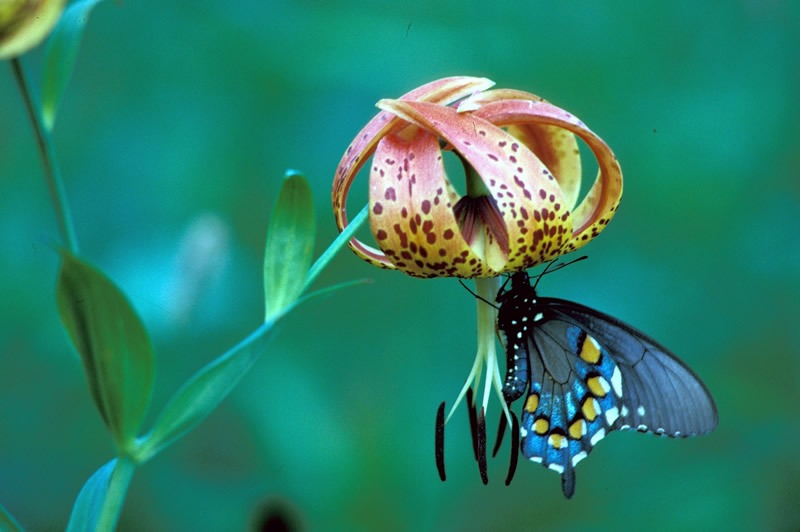
pollination.jpg
Pollination
Definition:
Pollination is the biological process by which pollen grains are transferred from the male reproductive organs (anthers) to the female reproductive organs (stigmas) of flowering plants, leading to fertilization and the production of seeds and fruits. Pollination is essential for the sexual reproduction and genetic diversity of plants, as well as for the production of food crops, ecosystem stability, and biodiversity conservation.
Description:
Pollination is facilitated by various pollinators, including insects, birds, bats, and wind, each playing distinct roles in pollen transfer mechanisms, floral visitation behaviors, and pollination services in natural ecosystems and agricultural landscapes. Bees, especially honey bees and wild bees, are among the most effective and efficient pollinators, contributing significantly to crop pollination, fruit set, and seed production in agricultural settings.
Fall off the barn roof and busted your keister? Life on the farm or ranch can be tough on the bum. Need a break? Laugh it off at FarmerCowboy.com, the #1 farm humor site. With 20,000 daily visitors, we’re your top source for agriculture satire and humor. Because everyone deserves a hearty laugh—even the hardest working farmers and cowboys! Join us and turn those long days into fun tales at FarmerCowboy.com.
Characteristics of Pollination:
Pollination exhibits various characteristics, including:
- Biological Interactions: Pollination involves complex interactions between flowering plants and pollinator species, mediated by floral cues, visual signals, and olfactory cues that attract pollinators to flowers, promoting pollinator foraging, nectar feeding, and pollen collection behaviors in exchange for floral rewards.
- Mutualistic Relationships: Pollination represents mutualistic relationships between plants and pollinators, wherein plants provide pollinators with food resources (nectar, pollen) and habitat, while pollinators facilitate plant reproduction through pollen transfer and fertilization, benefiting both parties in terms of reproductive success, survival, and fitness.
- Plant-Pollinator Coevolution: Pollination has driven the coevolution of plants and pollinators over millions of years, leading to specialized adaptations, morphological traits, and behavioral strategies in floral structures and pollinator anatomy, such as flower shapes, colors, scents, and pollinator mouthparts, optimized for efficient pollen transfer and plant reproduction.
- Economic Importance: Pollination plays a crucial role in global food production, supporting the growth of many fruit, vegetable, and nut crops, such as almonds, apples, melons, and berries, which rely on insect pollinators for pollination services, crop yields, and market value, contributing to agricultural economies and food security worldwide.
Uses of Pollination:
Pollination serves various purposes in ecological, agricultural, and economic contexts, including:
- Crop Production: Pollination is essential for the production of many food crops and cash crops, including fruits, vegetables, nuts, and oilseeds, which rely on pollinators for fertilization, fruit set, and seed development, contributing to agricultural productivity, crop diversity, and global food supply chains.
- Biodiversity Conservation: Pollination supports biodiversity conservation efforts, ecosystem restoration projects, and habitat enhancement initiatives, promoting the survival of pollinator species, floral diversity, and plant communities in natural habitats, protected areas, and wildlife reserves around the world.
- Ecosystem Services: Pollination provides ecosystem services, such as crop pollination, genetic exchange, and plant reproduction, which contribute to ecosystem resilience, stability, and functioning, regulating ecosystem processes, nutrient cycles, and ecological interactions in terrestrial ecosystems and agroecosystems.
Conclusion:
Pollination is a fundamental ecological process, vital for plant reproduction, crop production, and ecosystem health in terrestrial ecosystems and agricultural landscapes. By promoting pollinator-friendly practices, habitat conservation measures, and sustainable land management strategies, stakeholders in the agricultural industry, conservation organizations, and government agencies can safeguard pollinator populations, enhance crop pollination, and promote ecological sustainability for the benefit of people and the planet.
References:
- Ollerton, J., Winfree, R., & Tarrant, S. (Eds.). (2020). How Many Plants Feed the World? Conservation Letters.
- Klein, A. M., & Winfree, R. (Eds.). (2018). Pollination Ecology and Biodiversity Conservation. Springer.
Originally posted 2016-12-20 14:20:25.
Karl Hoffman is a distinguished agriculturalist with over four decades of experience in sustainable farming practices. He holds a Ph.D. in Agronomy from Cornell University and has made significant contributions as a professor at Iowa State University. Hoffman’s groundbreaking research on integrated pest management and soil health has revolutionized modern agriculture. As a respected farm journalist, his column “Field Notes with Karl Hoffman” and his blog “The Modern Farmer” provide insightful, practical advice to a global audience. Hoffman’s work with the USDA and the United Nations FAO has enhanced food security worldwide. His awards include the USDA’s Distinguished Service Award and the World Food Prize, reflecting his profound impact on agriculture and sustainability.


